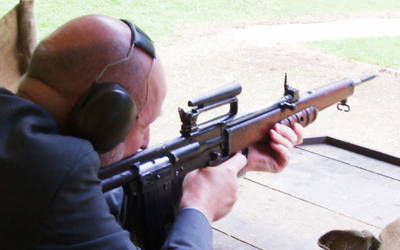Anthony Williams has just posted a new article online which discusses what is needed for the next generation of small arms.
Before the Afghan conflict began, it was assumed that small-arms engagements would continue to take place within the traditional 300 metre limit, as they had in Iraq, and ISAF forces were equipped accordingly. The rifles and LMGs carried by the infantry on foot patrols were overwhelmingly in 5.56mm calibre, using the NATO standard SS109/M855 ammunition. The US forces used three principal weapons: the M16 rifle (favoured by the USMC), M4 Carbine (increasingly favoured by the US Army because its compactness makes it more suitable for urban fighting, the typical scenario in Iraq) and the M249 development of the FN Minimi LMG. Some 7.62mm weapons, most notably the M240 (FN MAG variant) and also some sniper and marksman rifles, were available for use in a support role when required. The British patrols used the L85A2 rifle, L86A2 Light Support Weapon (effectively an IAR) and the L110 LMG (FN Minimi Para). As with the US forces, the L7 GPMG (FN MAG) was available in support, and bolt-action 7.62mm sniper rifles were also in service.
These arrangements were thrown into disarray when faced with the very different circumstances of Afghanistan, where the Taliban noted the range limitation of the 5.56mm weapons …
At the end of the article Tony has included a brief range report comparing the SCAR-H, HK417, HK G3K, Dragunov and EM-2.
Read the article here.
 Your Privacy Choices
Your Privacy Choices

